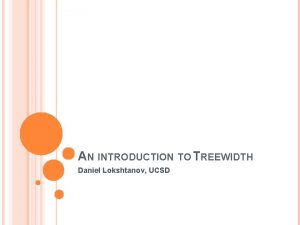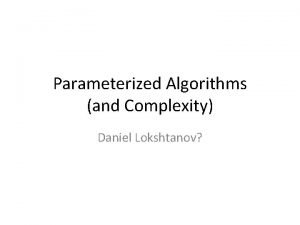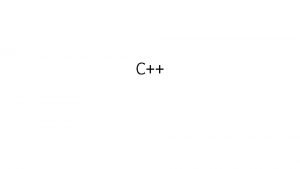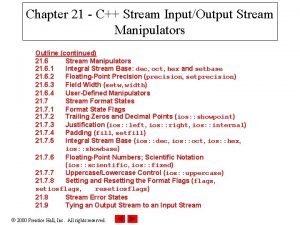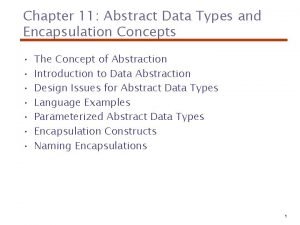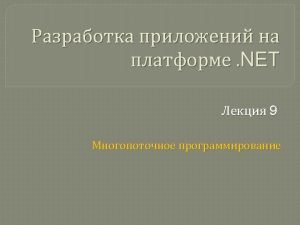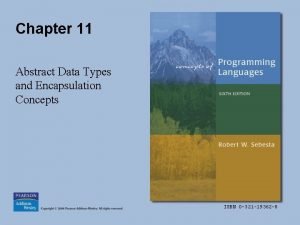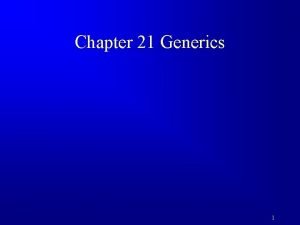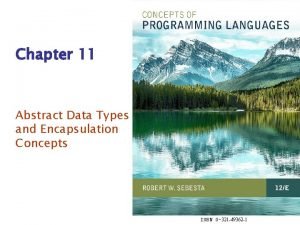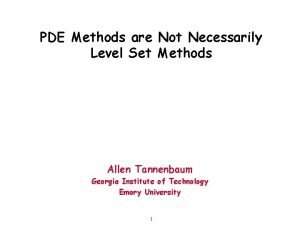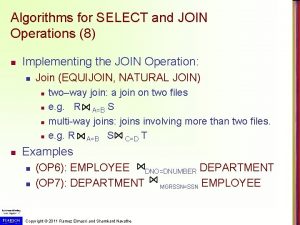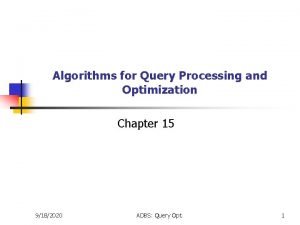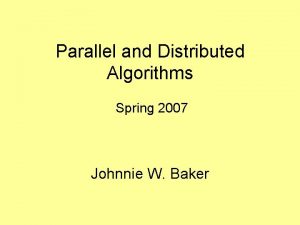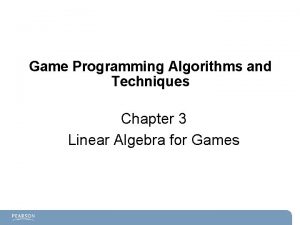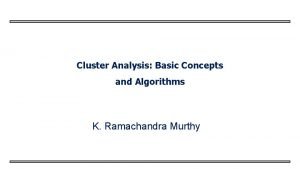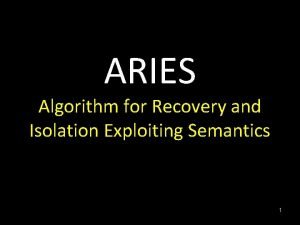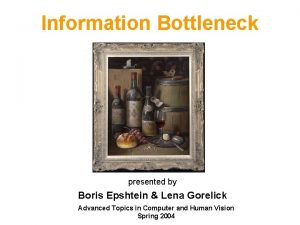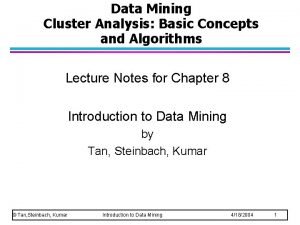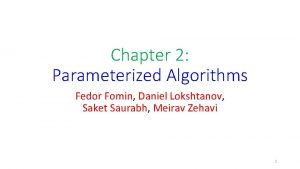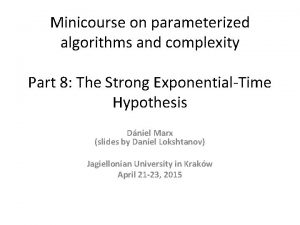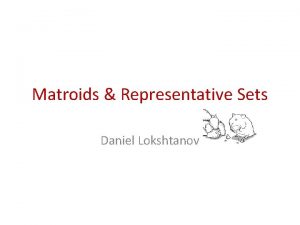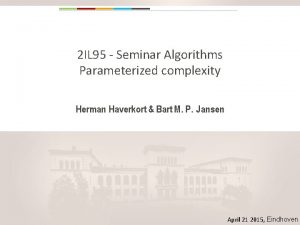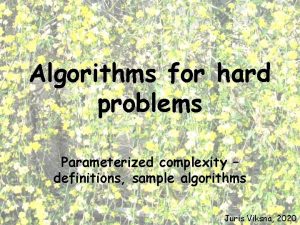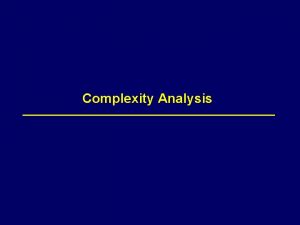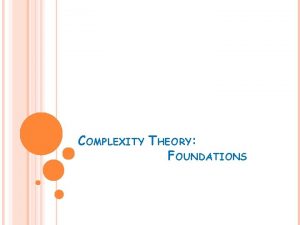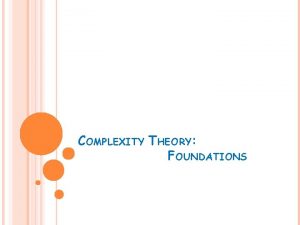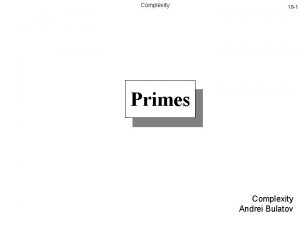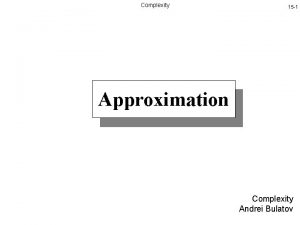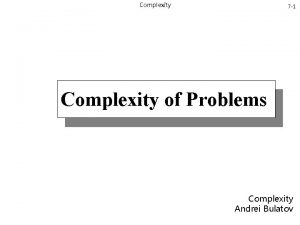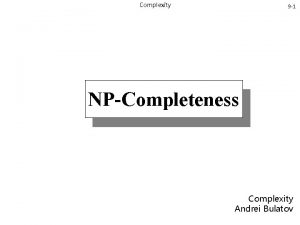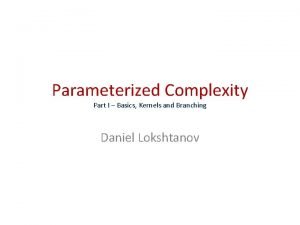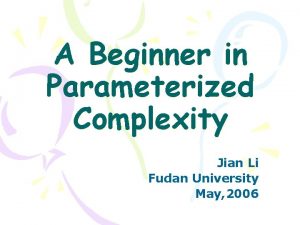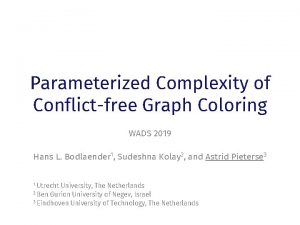Parameterized Algorithms and Complexity Daniel Lokshtanov If L















![Parameterized Complexity XP W[1] Fellows FPT Downey W[1] complete W[1] hard Ind. Set. Vertex Parameterized Complexity XP W[1] Fellows FPT Downey W[1] complete W[1] hard Ind. Set. Vertex](https://slidetodoc.com/presentation_image_h/d7e4d521efa34f350ff3225f2672d407/image-16.jpg)
![Research Flowchart XP? NO, NP-c for fixed k , YES FPT? NO, W[1]-hard YES Research Flowchart XP? NO, NP-c for fixed k , YES FPT? NO, W[1]-hard YES](https://slidetodoc.com/presentation_image_h/d7e4d521efa34f350ff3225f2672d407/image-17.jpg)

![Clique is W[1]-hard FPT algorithm for Clique (G , k) f(k)nc FPT algorithm for Clique is W[1]-hard FPT algorithm for Clique (G , k) f(k)nc FPT algorithm for](https://slidetodoc.com/presentation_image_h/d7e4d521efa34f350ff3225f2672d407/image-19.jpg)


![Same Problem – Different Parameters «Clique is W[1] hard» . m e l ob Same Problem – Different Parameters «Clique is W[1] hard» . m e l ob](https://slidetodoc.com/presentation_image_h/d7e4d521efa34f350ff3225f2672d407/image-22.jpg)




















- Slides: 42

Parameterized Algorithms (and Complexity) Daniel Lokshtanov?

If L is NP-hard no algorithm solves - all instances - optimally - in polynomial time. What about the easy instances? How to capture the notion of easy instances?

Size matters? The bit-size of the input instance is never the only thing that affects the running time of an algorithm BFS/DFS: O(n + m) k-SAT: O(2 n(1 -1/k)) Subset Sum: O(nt) k-Clique: O(nk+2)

Parameterized Complexity Measure the running time of algorithms as a function of size and something else. Mostly applied to NP-hard problems

Example: Vertex Cover Input: Graph G, integer k Question: O(2 nn 2) O(nk+2) Polynomial for every fixed k f(k)ng(k) XP Slicewice Polynomial

Vertex Cover in O(n + m + k. O(k)) time delete and decrease k by 1 S. R. Buss, before 93 Vertices of degree 0 are irrelevant Vertices of degree k must be in solution Every vertex has degree at most k delete If > k 2 edges no! Brute force is k. O(k)!

Even better? • OR Recursive algorithm!

Running time k k-1 k-2 k-3 k-2 . . . k-3 Total running time is O(2 knc)

Combining the two methods G, k G’, k’ time O(n+m) Apply O(2 knc) time algorithm Total time: O(n + m + 2 kkc)

Same problem, three algorithms XP nk+2 Even better than FPT? 2 k(n+m) n+m+2 kk 2 Same polynomial for every fixed k f(k)nc FPT Fixed Parameter Tractable

f(k)nc vs f(k) + nc f(k)2 + n 2 c f(k)nc

Are all problems XP? FPT? Coloring In: Graph G, integer k Question: Is G properly k-colorable? NP-complete for k = 3 XP algorithm would be polynomial time for k=3

Picture so far XP Vertex Cover FPT Anyone here? Yes! Graph Coloring

Independent Set Input: Graph G, integer k Question: XP: O(nkk 2) FPT? Probably no, but how to «prove» this?

P vs NP NP P complete
![Parameterized Complexity XP W1 Fellows FPT Downey W1 complete W1 hard Ind Set Vertex Parameterized Complexity XP W[1] Fellows FPT Downey W[1] complete W[1] hard Ind. Set. Vertex](https://slidetodoc.com/presentation_image_h/d7e4d521efa34f350ff3225f2672d407/image-16.jpg)
Parameterized Complexity XP W[1] Fellows FPT Downey W[1] complete W[1] hard Ind. Set. Vertex Cover 1992 Coloring
![Research Flowchart XP NO NPc for fixed k YES FPT NO W1hard YES Research Flowchart XP? NO, NP-c for fixed k , YES FPT? NO, W[1]-hard YES](https://slidetodoc.com/presentation_image_h/d7e4d521efa34f350ff3225f2672d407/image-17.jpg)
Research Flowchart XP? NO, NP-c for fixed k , YES FPT? NO, W[1]-hard YES

Clique Input: Graph G, integer k Question: XP: O(nkk 2) FPT?
![Clique is W1hard FPT algorithm for Clique G k fknc FPT algorithm for Clique is W[1]-hard FPT algorithm for Clique (G , k) f(k)nc FPT algorithm for](https://slidetodoc.com/presentation_image_h/d7e4d521efa34f350ff3225f2672d407/image-19.jpg)
Clique is W[1]-hard FPT algorithm for Clique (G , k) f(k)nc FPT algorithm for Independent Set (G, k) f(k)nc

Can we reduce Independent Set to Vertex Cover? O(2 n-k) ! T P F time algorithm T O For IS N 2 k + n + m time algorithm For VC

Clique Parameterized by Max Degree Input: Question: Algorithm: For every vertex v, look for the largest clique inside N(v). Time: O(2Δn) P F ! T
![Same Problem Different Parameters Clique is W1 hard m e l ob Same Problem – Different Parameters «Clique is W[1] hard» . m e l ob](https://slidetodoc.com/presentation_image_h/d7e4d521efa34f350ff3225f2672d407/image-22.jpg)
Same Problem – Different Parameters «Clique is W[1] hard» . m e l ob no f(k)nc time algorithm e pr Clique parameterized am s g in z i r e by solution size k aramet p f e. o n s o is W[1] hard. y ht» t wa g i n r e r e iffe is «th d y e n a n o M gle n i s Clique parameterized No by maximum degree Δ is FPT. O(2Δn) time algorithm

Parameterized Problems Clique/Soln size Clique/Max degree

Research Flowchart Try new parameter YES XP? YES FPT? V. C. / soln. size Clique / Max Degree ter me ara w p Ne NO, NP-c for fixed k , NO, W[1]-hard Coloring / #colors er Try met a r a p new Clique / soln. size Ind. Set / soln. size

k-Coloring parameterized by VC •

k-Coloring parameterized by VC X Branch on kx colorings of X. I = V(G) X For each guess, color I greedily.

Above Guarantee Vertex Cover • Maximum Matching

Above Guarantee Vertex Cover •

Research Flowchart Try new parameter YES XP? FPT? ter me ara w p Ne Coloring / #colors er met a r a p new Try V. C. / soln. size Clique / Max Degree NO, W[1]-hard Coloring / V. C. / soln. size – MM(G) NO, NP-c for fixed k , YES Clique / soln. size Ind. Set / soln. size

Faster Independent Set? O(nkk 2) time algorithm Have: Much room for progress! No f(k)nc unless FPT = W[1]

Faster Independent Set! J. Nesetril, S. Poljak, 1985 Independent Set in time = O(n 0. 79 k) Matrix multiplication constant

Faster Vertex Cover O(2 kk 2 + n + m) time algorithm Next lecture: O(1. 47 k + n + m) Have: Chen, Kanj: O(1. 274 k + n + m) No O(nc) unless P = NP

Research Flowchart Try new parameter YES XP? FPT? ter me ara w p Ne YES , er met a r a p new Try Better FPT? NO, W[1]-hard NO, NP-c for fixed k YES Better XP? YES

Can we just keep improving? •

The Exponential Time Hypotnesis Impagliazzo Paturi Zane ETH: Exists ε > 0 such that 3 -SAT has no O(2εn) time algorithm.

ETH based lower bounds Cai Juedes Assuming the ETH, there exists ε > 0 such that there is no O(2εknc) time algorithm for Vertex Cover, … (Just trace the NP-completeness reduction!)

ETH based lower bounds Fellows Chen Chor Huang Kanj Xia Exists ε > 0 s. t. there is no f(k)nεk time for Independent Set Juedes

Graph Coloring / Vertex Cover Saw: Marx Saurabh L. Assuming ETH there exists ε > 0 s. t. there is no O(xεxnc) time for Graph Coloring

Research Flowchart Try new parameter YES XP? FPT? ter me ara w p Ne NO, W[1]-hard NO, NP-c for fixed k YES , er Try met a r a p new Better FPT? YES Better XP? NO NO YES ETH Lower Bound?

Limitations of the ETH (So far) lower bounds under ETH are all on the form exists ε > 0 s. t. there is no O(2εf(k)nc) time algorithm… How to distinguish between 2 k and 1. 99 k?

More to come Restricting Input Connections to Approximation Schemes FPT-Approximation Kernels And kernel lower bounds And inapproximability Approximate Kernels And lower bounds Connections to polynomial time Minding the nc

Thank you!
 Cmsol
Cmsol Daniel lokshtanov
Daniel lokshtanov How to find complexity of algorithm
How to find complexity of algorithm Time space complexity of algorithm
Time space complexity of algorithm Difference between default and parameterized constructor
Difference between default and parameterized constructor Setfill
Setfill Parameterized abstract data types
Parameterized abstract data types Parameterized abstract data types
Parameterized abstract data types Parameterized thread
Parameterized thread Parameterized abstract data types
Parameterized abstract data types Dsp1
Dsp1 Raw use of parameterized class 'linkedhashmap'
Raw use of parameterized class 'linkedhashmap' Naming encapsulations
Naming encapsulations Parameterized curve
Parameterized curve Oracle apex parameterized report
Oracle apex parameterized report Computational thinking algorithms and programming
Computational thinking algorithms and programming Design and analysis of algorithms syllabus
Design and analysis of algorithms syllabus Data structures and algorithms iit bombay
Data structures and algorithms iit bombay Association analysis: basic concepts and algorithms
Association analysis: basic concepts and algorithms Fftooo
Fftooo Cos423
Cos423 Data structures and algorithms tutorial
Data structures and algorithms tutorial Algorithms for select and join operations
Algorithms for select and join operations Algorithms and flowcharts
Algorithms and flowcharts Undecidable problems and unreasonable time algorithms.
Undecidable problems and unreasonable time algorithms. Information retrieval data structures and algorithms
Information retrieval data structures and algorithms Data structures and algorithms bits pilani
Data structures and algorithms bits pilani Cluster analysis basic concepts and algorithms
Cluster analysis basic concepts and algorithms Probabilistic analysis and randomized algorithms
Probabilistic analysis and randomized algorithms Design and analysis of algorithms introduction
Design and analysis of algorithms introduction Algorithms for query processing and optimization
Algorithms for query processing and optimization Synchronization algorithms and concurrent programming
Synchronization algorithms and concurrent programming Parallel and distributed algorithms
Parallel and distributed algorithms Ajit diwan iitb
Ajit diwan iitb Dot product rules
Dot product rules Cluster analysis basic concepts and algorithms
Cluster analysis basic concepts and algorithms Cjih
Cjih Aries recovery algorithm
Aries recovery algorithm Digital signal processor architecture
Digital signal processor architecture Boris epshtein
Boris epshtein Data structures and algorithms
Data structures and algorithms Data structures and algorithms
Data structures and algorithms Cluster analysis basic concepts and algorithms
Cluster analysis basic concepts and algorithms
